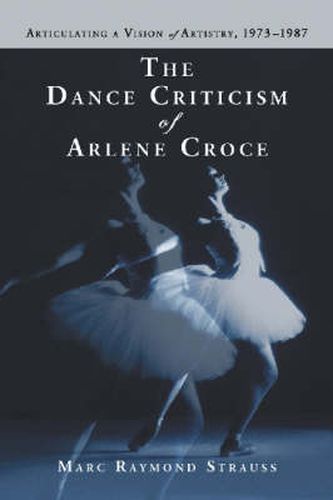Readings Newsletter
Become a Readings Member to make your shopping experience even easier.
Sign in or sign up for free!
You’re not far away from qualifying for FREE standard shipping within Australia
You’ve qualified for FREE standard shipping within Australia
The cart is loading…






This title is printed to order. This book may have been self-published. If so, we cannot guarantee the quality of the content. In the main most books will have gone through the editing process however some may not. We therefore suggest that you be aware of this before ordering this book. If in doubt check either the author or publisher’s details as we are unable to accept any returns unless they are faulty. Please contact us if you have any questions.
Prominent dance critic Arlene Croce wrote for The New Yorker during the 1970s, ‘80s and '90s. Through her 207 critiques in that magazine, she established a classical aesthetic framework for dance, influencing the work of other critics as well as the tastes of audiences. This book explores that framework and provides an interpretative analysis of the biographical, professional and historical elements that contributed to the context of Croce’s work. Topics include Croce’s predecessors in artistic critique, relevant twentieth-century contemporaries and the journalistic philosophy of The New Yorker. Examining 10 of Croce’s essays in depth, the author discusses the three specific elements of artistic excellence which Croce consistently used in her evaluations: sympathetic musicality, Apollonian craftsmanship and the enlivening of tradition. Special attention is given to the literary qualities of Croce’s work. Finally, appendices offer a detailed subjective breakdown of Croce’s essays, listing (by frequency of appearance) dance companies, dancers, choreographers and dance genres.
$9.00 standard shipping within Australia
FREE standard shipping within Australia for orders over $100.00
Express & International shipping calculated at checkout
This title is printed to order. This book may have been self-published. If so, we cannot guarantee the quality of the content. In the main most books will have gone through the editing process however some may not. We therefore suggest that you be aware of this before ordering this book. If in doubt check either the author or publisher’s details as we are unable to accept any returns unless they are faulty. Please contact us if you have any questions.
Prominent dance critic Arlene Croce wrote for The New Yorker during the 1970s, ‘80s and '90s. Through her 207 critiques in that magazine, she established a classical aesthetic framework for dance, influencing the work of other critics as well as the tastes of audiences. This book explores that framework and provides an interpretative analysis of the biographical, professional and historical elements that contributed to the context of Croce’s work. Topics include Croce’s predecessors in artistic critique, relevant twentieth-century contemporaries and the journalistic philosophy of The New Yorker. Examining 10 of Croce’s essays in depth, the author discusses the three specific elements of artistic excellence which Croce consistently used in her evaluations: sympathetic musicality, Apollonian craftsmanship and the enlivening of tradition. Special attention is given to the literary qualities of Croce’s work. Finally, appendices offer a detailed subjective breakdown of Croce’s essays, listing (by frequency of appearance) dance companies, dancers, choreographers and dance genres.